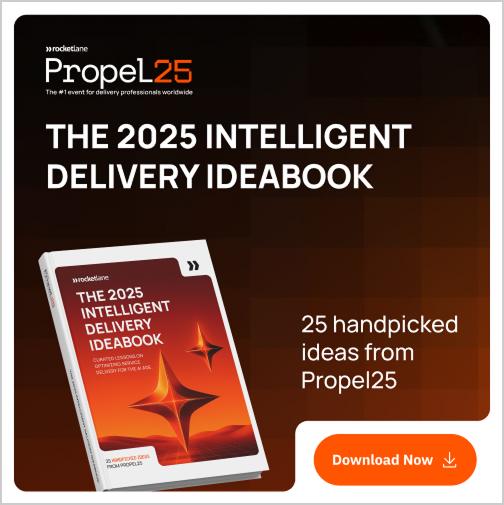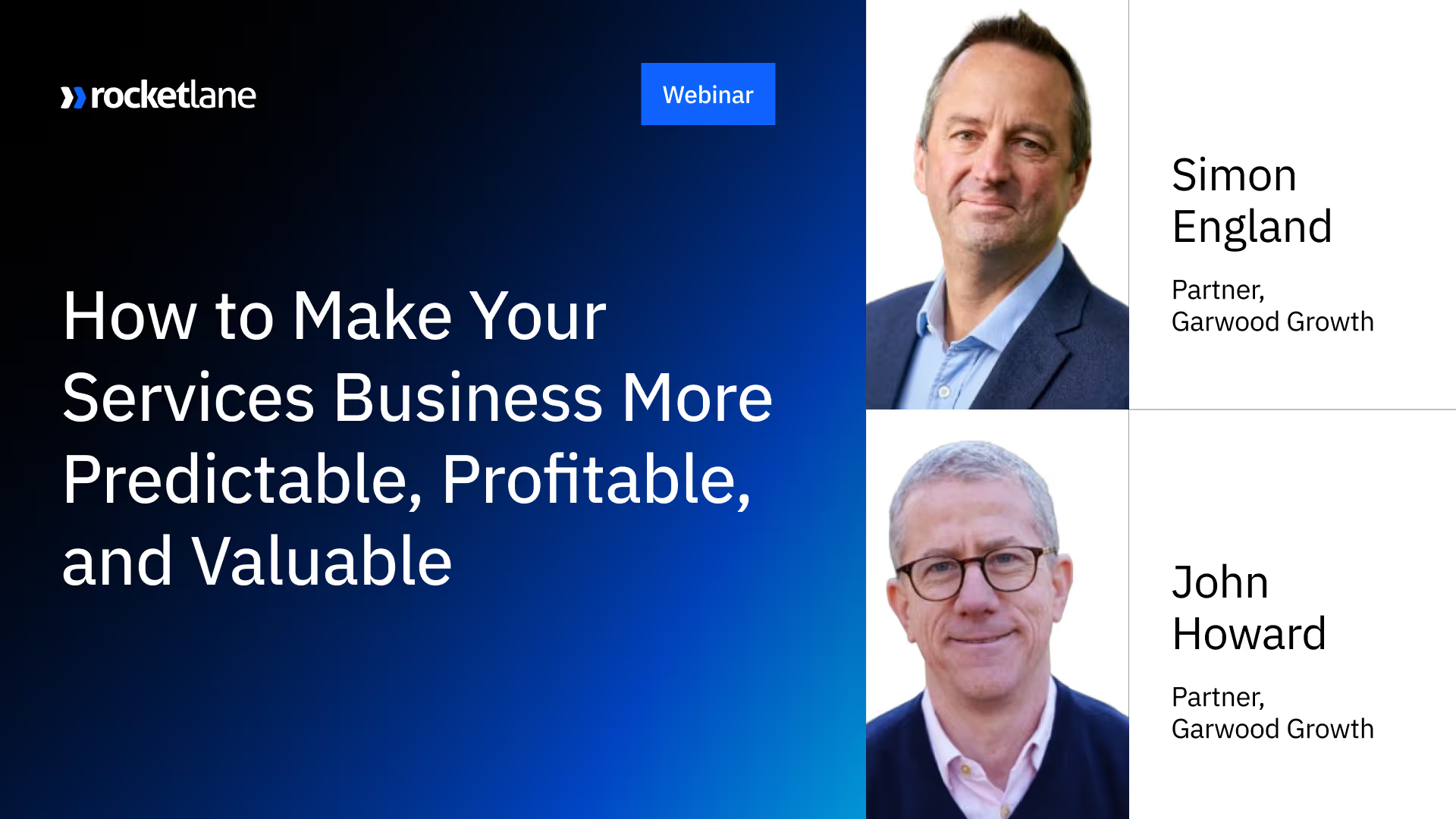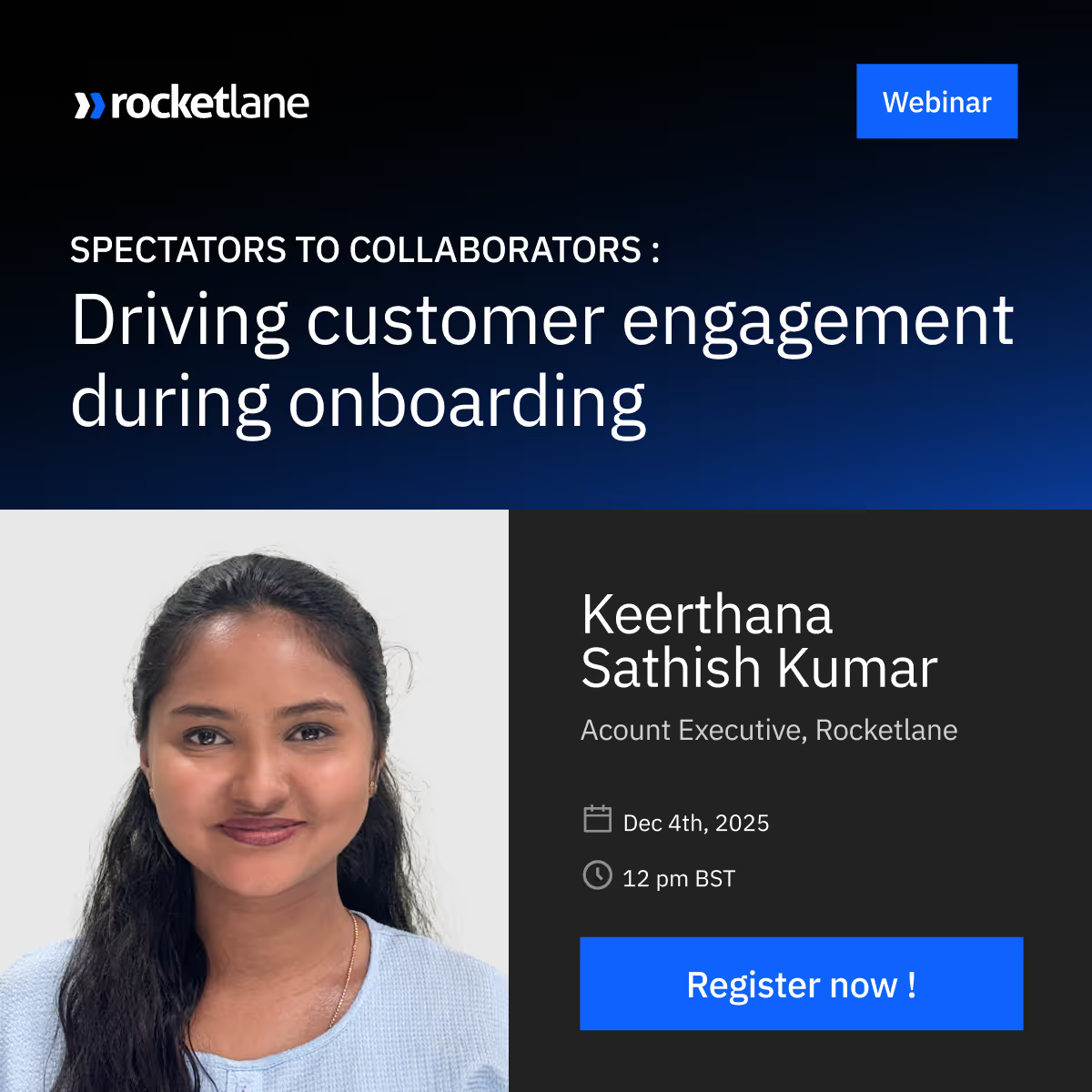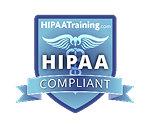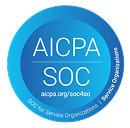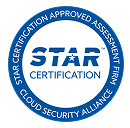Artificial intelligence is changing how professional services firms plan, deliver, and grow. Leading firms are already using AI to gain clearer insights, improve execution, and scale efficiently. Those who wait risk losing ground.
In a recent Rocktlane webinar, we brought together two seasoned experts from Garwood Growth, a specialist advisory firm for tech and professional services businesses, to share their perspectives. Simon England, with decades of experience at Accenture and as a board director at HCL Tech, and John Howard, former CEO of Channel 3 Consulting and a lifelong professional services strategist, offered an insider’s view of how the AI wave is reshaping the world of professional services.
The session explored:
- What makes this AI wave fundamentally different from those that came before
- How firms can harness GenAI and agentic intelligence to lead from the front
- Where the risks lie
- How Professional Services Automation (PSA) tools play a critical role in this transformation
Read on for a summary of the key takeaways from the webinar.
Tool to teammate: How AI is becoming the new workforce in professional services
For years, AI in professional services was focused on enhancing back-office workflows, nudging productivity, and mostly existing as an assistant to the real action. But that paradigm has shifted in 2025.
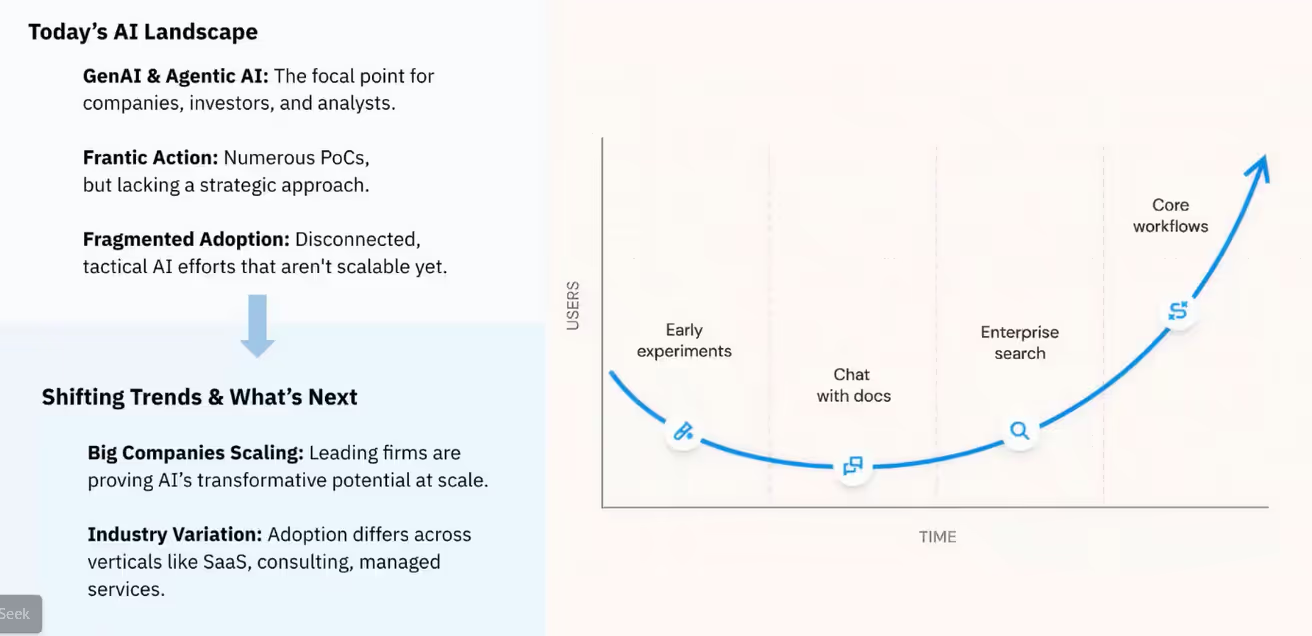
Today, we see firms in various stages of an AI maturity curve:
- Early experimentation: Pilots and point solutions, often siloed and fragmented
- Operational embedding: Using AI in delivery motions—from DevOps to knowledge management to client workflows
- Strategic transformation: Reframing AI as a core capability, on par with human talent
But there’s a newer wave, led by agentic AI, where AI is starting to do the work.
Unlike traditional AI or even generative AI, which focused on producing content or insights, agentic AI goes a step further. It takes action, executes decisions, and learns autonomously. In essence, it behaves more like a virtual teammate than a tool.
If you haven’t already started treating AI as a strategic teammate, not just a clever tool, you’re falling behind. And as Simon pointed out, that “virtual teammate” now needs onboarding, performance targets, and defined roles, just like any other hire.
What a top-down approach to AI transformation looks like
There’s a pattern that plays out too often: a high-growth tech or services firm with bold AI ambitions, but no unified approach. AI pilots live in the product team. Delivery teams wait for direction. And while innovation looks good in isolation, the business struggles to translate it into real ROI.
AI strategy cannot be distributed piecemeal. It needs coordinated direction from the top, including clear goals, policy guardrails, and a realistic transition plan from current processes to AI-first workflows.
This kind of top-down leadership is especially important in three areas:
1. New value propositions: Firms are beginning to offer AI-driven services such as virtualized delivery, autonomous configuration, or GenAI-powered advisory work. These represent new kinds of offerings that wouldn’t be possible without agentic capabilities.
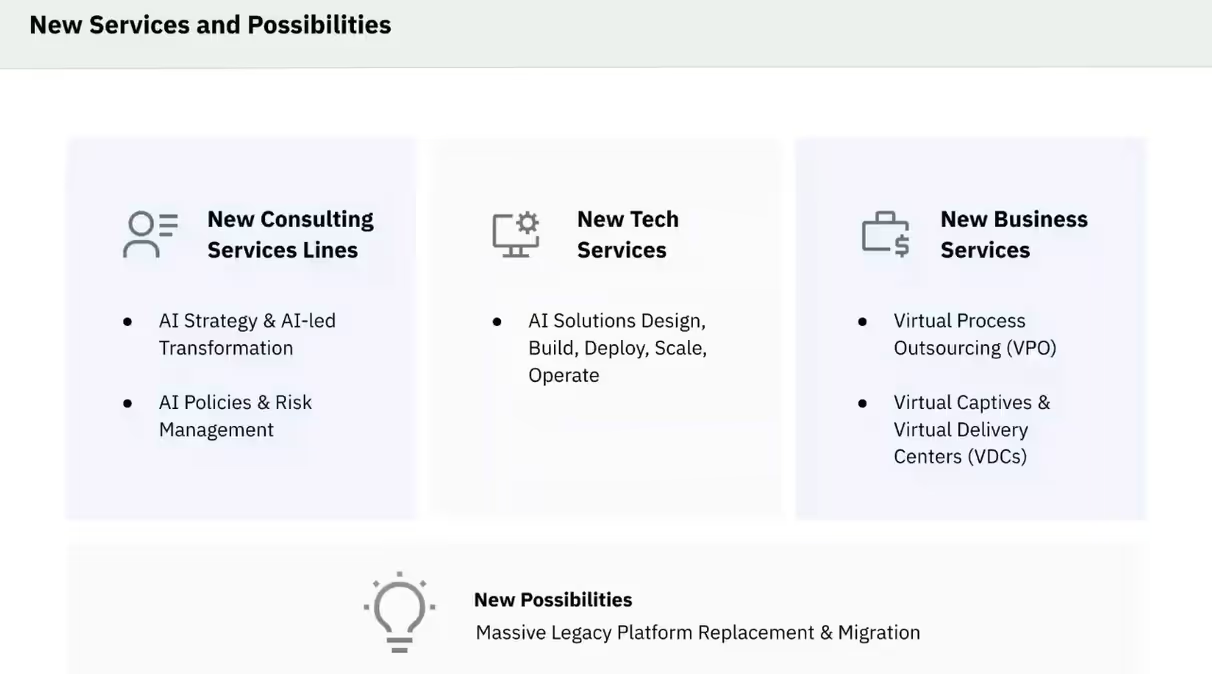
2. Reimagined delivery models: Where older automation chipped away at small tasks, agentic AI allows for broader redefinition. Core delivery functions like onboarding, configuration, account transitions, and even client communication can now be coordinated by agents.
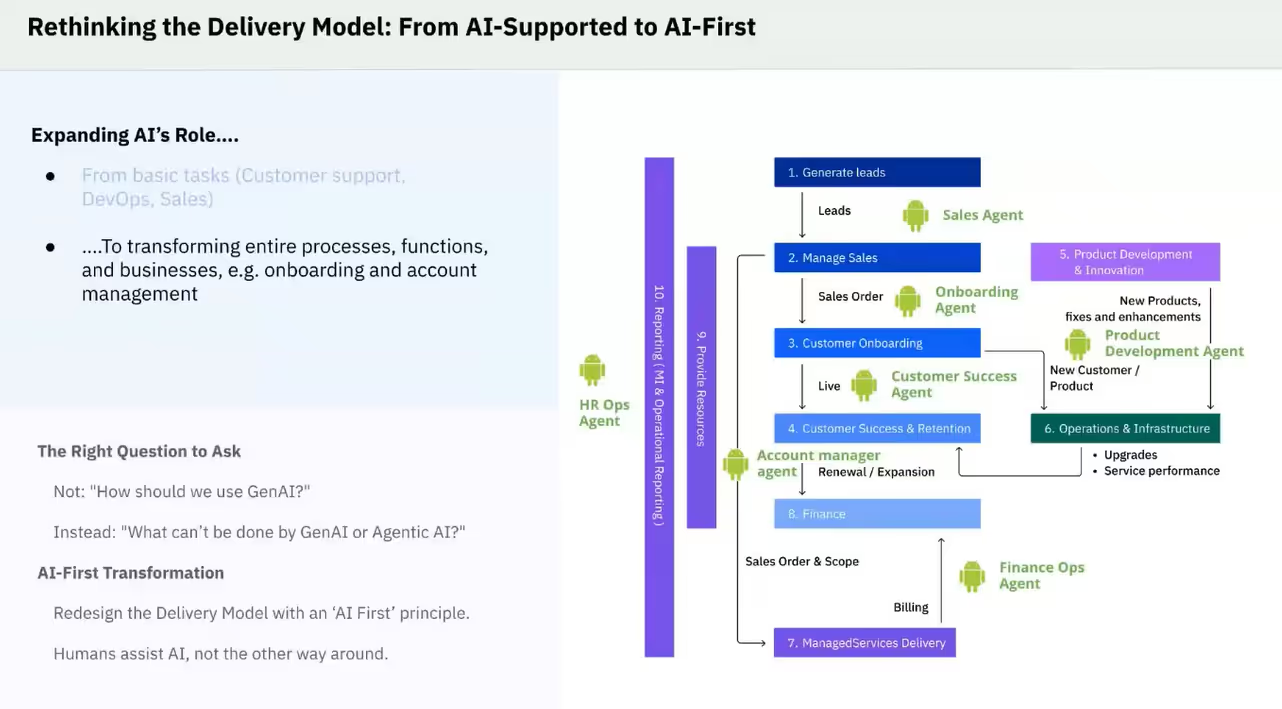
3. Managing data trust, policy, and governance: As agentic AI becomes embedded in delivery, the question of trust becomes central. This is a leadership responsibility. Even as AI capabilities mature, firms need strong frameworks around:
- What AI is allowed to do
- When human intervention is required
- How client-specific data is handled and secured
- How AI outputs are tracked and validated
The emerging operating model rewriting the rules of value
Should AI be treated only as an internal enabler, or can it be built into billable services?
The answer can’t be a simple either/or. AI needs to support internal efficiency while also creating client-facing value. Treating the two in sequence risks falling behind.
Equally importantly, talent models are shifting. With AI absorbing many repeatable and junior-level tasks, firms are seeing:
- A drop in demand for entry-level roles
- An increase in average salary costs per employee
- A shift toward AI-literate, cross-functional roles
The org chart is starting to evolve from a pyramid to a diamond.
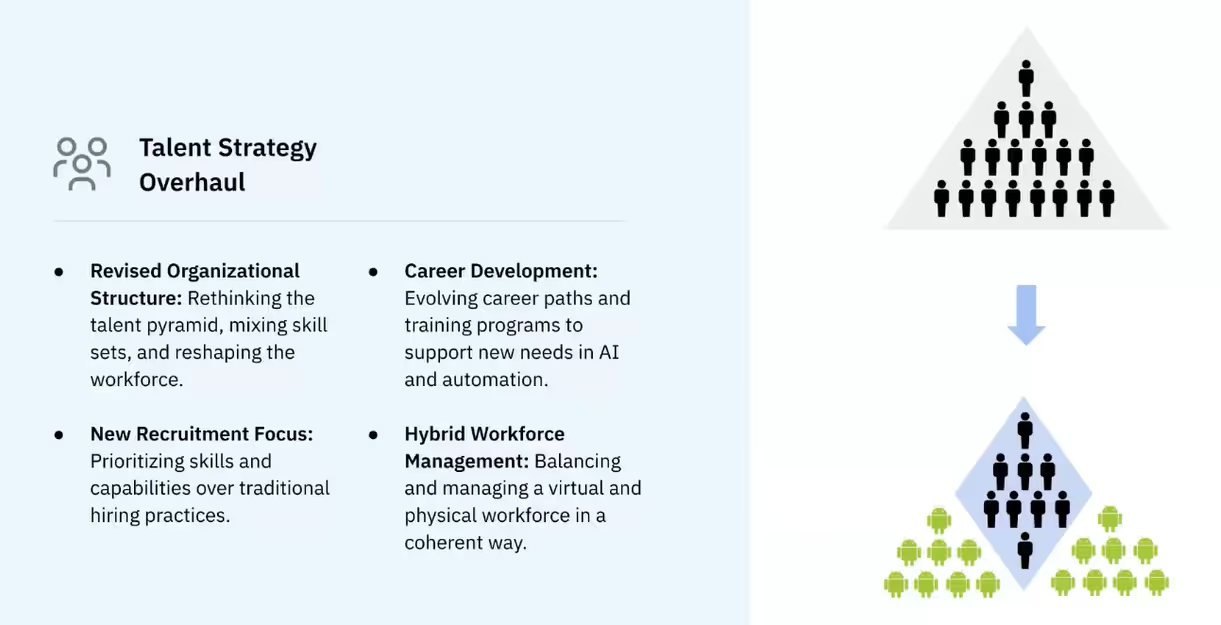
This means fewer people at the bottom, more specialized mid-level roles, and a strong emphasis on AI-augmented work. New roles are also emerging: heads of AI policy, AI QA leads, and hybrid team managers.
These changes raise operational questions around training, performance management (even for bots), and forecasting human-AI capacity. These require leadership to rethink how delivery is structured and measured.
The role of PSA in AI-first delivery
As firms retool their delivery models, PSA platforms are becoming central to how they operationalize AI. A PSA tool connects CRM, project systems, finance, HR, and delivery. That integration gives it the visibility needed for intelligent orchestration.
In an AI-first world, a PSA tool becomes the execution layer for AI-powered delivery, especially when connected to agents that can interpret data, make decisions, and act.
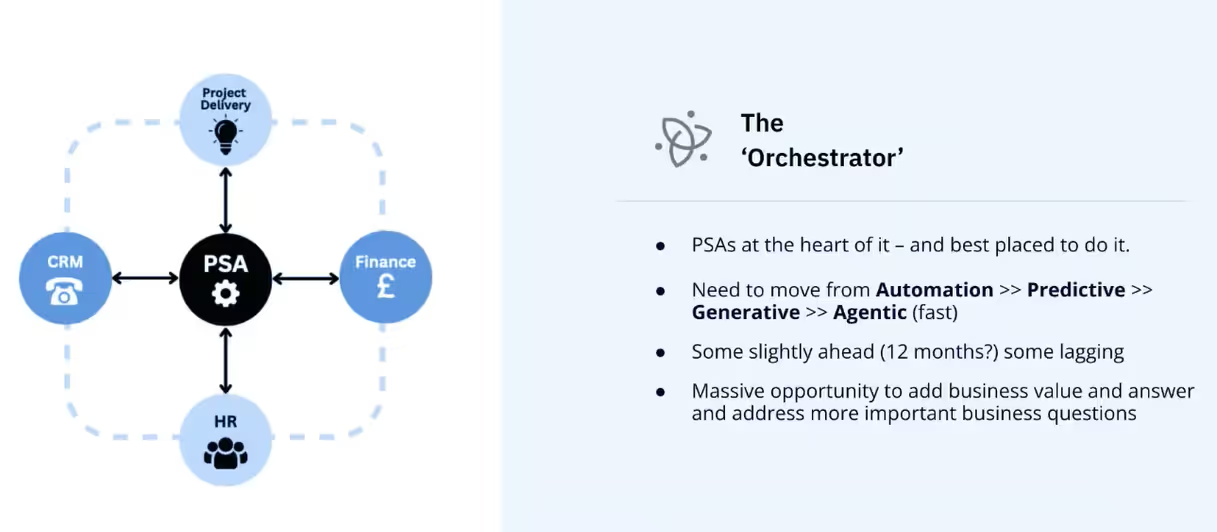
Some examples of this in action:
- AI that reads a contract and spins up a delivery plan
- AI that listens to discovery calls and writes project documentation
- Agents that reassign work when a team member is offboarded
- Forecasting tools that flag risk before a PM notices it
Rocketlane’s PSA approach to intelligent delivery
Our focus is on driving radical efficiency across internal ops, client delivery, and leadership workflows, with PSA at the center as the system of execution.
We’re building intelligent delivery systems that support everyone in the org—from ICs to ops to leaders:
- For individual contributors, that means eliminating manual busywork so they can focus on what moves the needle.
For example, instead of starting projects from scratch, our AI agents now parse the SOW, generate tailored project plans, and auto-assign the right resources. ICs also get a context-rich sales handoff, created by pulling key data from calls, emails, and meetings.
- For ops teams, it’s about reducing overhead and keeping processes clean. Tasks like data migrations, backlog cleanup, timesheet compliance, and resource reallocation can now be handled by AI agents.
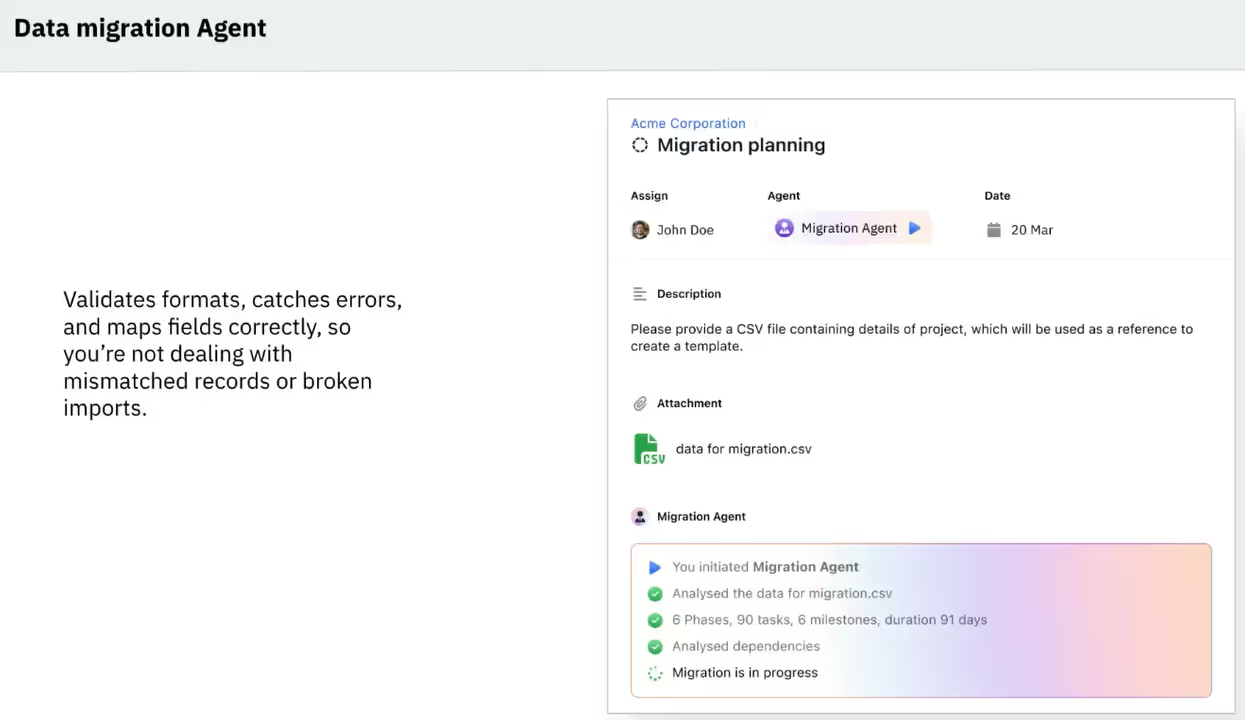
- For leaders, the focus is on visibility and timely action. Rocketlane surfaces delivery risks, churn signals, and possible upsell moments early, based on project and account activity. It also logs key issues and assumptions automatically, so decisions are based on up-to-date context rather than chasing status updates.
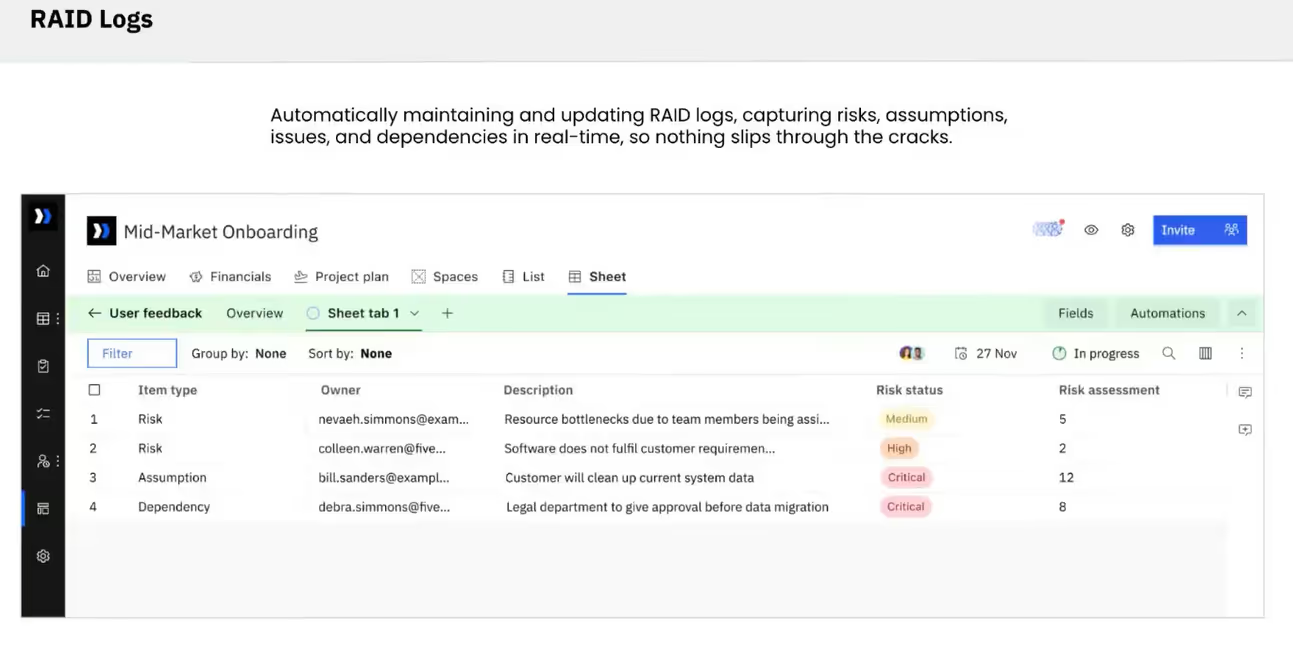
Everything we build is designed to connect the upstream (sales, planning) with the downstream (execution, reporting), with Rocketlane acting as the PSA-powered command center for intelligent delivery.
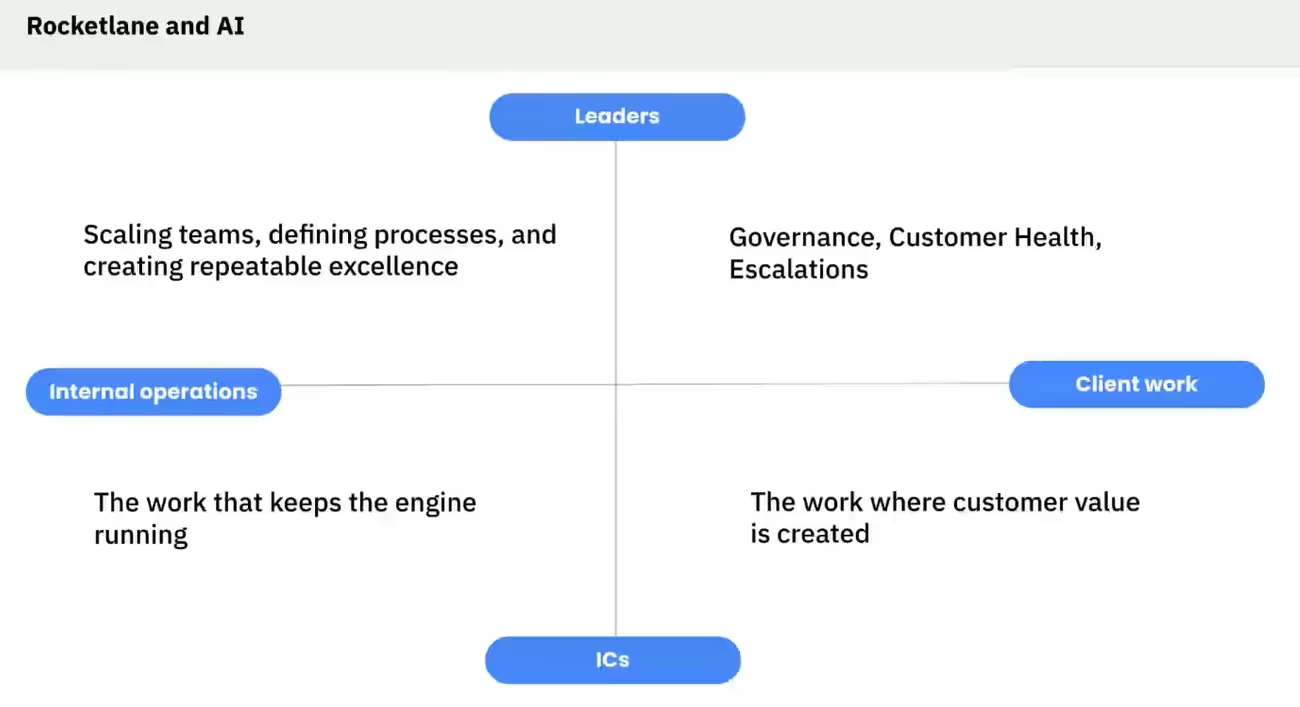
Curious how Rocketlane can power intelligent delivery at your org? Book a demo to see it in action.
